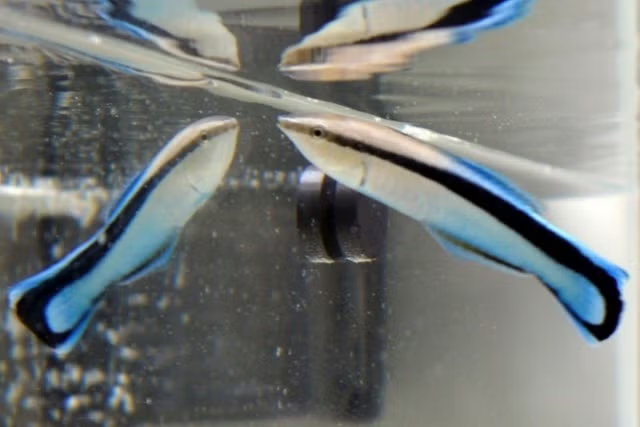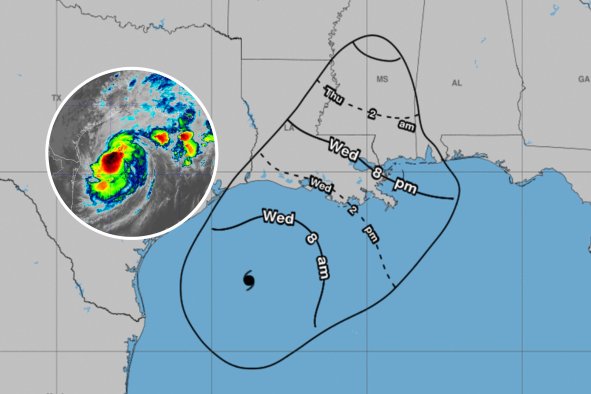NASA's Europa Clipper mission passed a key milestone review with flying colors and is now approved to proceed toward launch on schedule in a few weeks following a technical scare, officials told reporters at a teleconference.
The mission will study whether Jupiter's moon Europa could be hospitable for life. The moon is considered to be one of the most promising places in the solar system in the search for currently habitable environments beyond the Earth.
There is strong evidence to suggest that Europa has a global ocean of liquid water beneath its icy crust, which scientists suspect harbors the suitable conditions to support life.
On Monday, NASA officials said in the teleconference that Europa Clipper had passed a planning milestone known as Key Decision Point E (KDPE) and will proceed toward a launch period that opens on October 10, 2024.
"It is wonderful to be here with incredibly good news," Nicola Fox, associate administrator with the Science Mission Directorate at NASA Headquarters, said at the conference. "We just put the Europa Clipper Mission through the key milestone review here that we call KDPE—the last big review before we really get into that launch fever—and we're really happy to say that they unequivocably passed that review today.
"At NASA, we strive to answer these really fundamental questions about our solar system and our place in it. Europa Clipper will bring us even closer to that answer. By flying close to [Europa] and through the plumes that come up [the mission] will help us better understand the astrobiology and the potential for habitable worlds beyond our home planet."
The passing of the KDPE review will come as welcome news to planners of the $5 billion mission in light of the technical problems with the spacecraft's transistors that became apparent in the spring of this year. These pieces of equipment were found to suffer failures at lower doses of radiation than previously thought. This presented a significant problem given the high radiation environment present around Jupiter.
But months of "rigorous" testing and analysis have revived confidence that the transistors will be able to withstand this high-radiation environment at Jupiter and Europa throughout the spacecraft's four-year mission.
"I am thrilled to say that we are confident that our beautiful spacecraft and capable team are ready for launch operations and our full science mission at Europa. This was a huge lift," Laurie Leshin, center director at NASA's Jet Propulsion Laboratory, said at the teleconference.
"Right now, we're moving full speed ahead towards the opening of our launch window on October 10, and soon the spacecraft will lift off from Kennedy Space Center—and then it's off to Jupiter. We're excited and ready to carry out Europa Clipper's mission as planned. We are now confident that we can deliver that mission, which will deliver incredible science."
First, though, the spacecraft must successfully launch before making the 1.8-billion-mile journey to Jupiter. Once it arrives—expected in 2030—the probe will conduct nearly 50 close flybys of Europa, collecting data on the moon with its "stunning" array of sensors. This will help scientists understand Europa's icy crust and suspected global ocean below, as well as the moon's chemical composition and geology.
"This data will change the textbooks—[it] will give us generations of new knowledge about the incredible moon Europa," Leshin said.
The orbiter, featuring huge solar arrays and radar antennas, is the largest spacecraft NASA has ever developed for a planetary mission. The spacecraft body measures around 16 feet in height, and its arrays span around 100 feet across when fully deployed. The probe has a dry mass—i.e., with no propellant in the tank—of 7,145 pounds.
"As we all know, sending a mission into space is hard; we always say that space is not for the faint of heart. It's even more ambitious to send this largest spacecraft that NASA's ever built for planetary exploration, and it will travel into the incredibly harsh radiation environment around Jupiter," Fox said.
"So, I, for one, cannot wait for Europa Clipper's launch next month, and I'm even more excited to see all of the incredible and unprecedented science...that we will get from Clipper in the generations to come."
Do you have a tip on a science story that Newsweek should be covering? Do you have a question about space exploration? Let us know via science@newsweek.com.
Disclaimer: The copyright of this article belongs to the original author. Reposting this article is solely for the purpose of information dissemination and does not constitute any investment advice. If there is any infringement, please contact us immediately. We will make corrections or deletions as necessary. Thank you.



